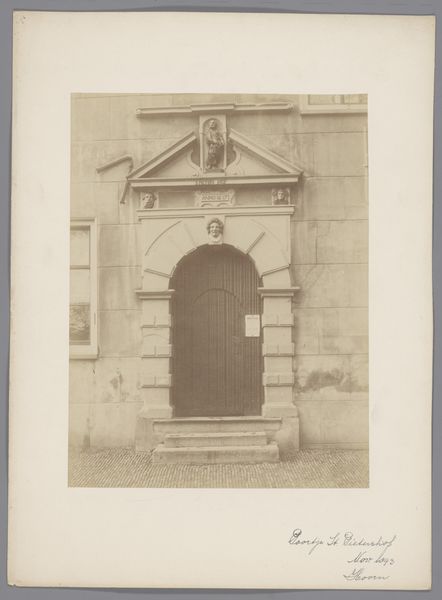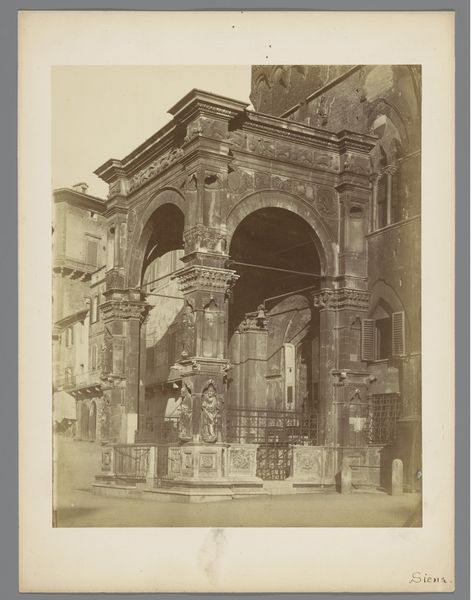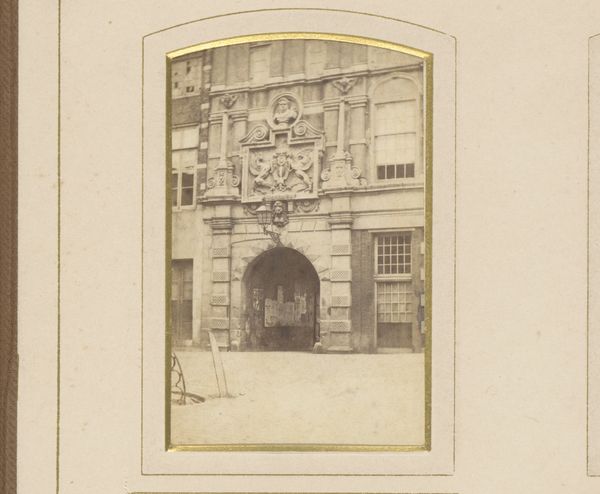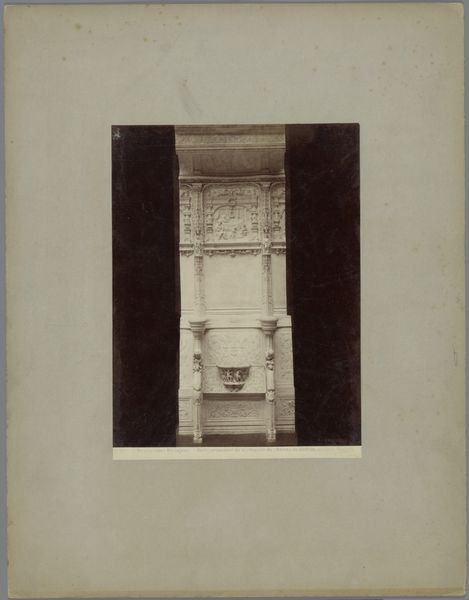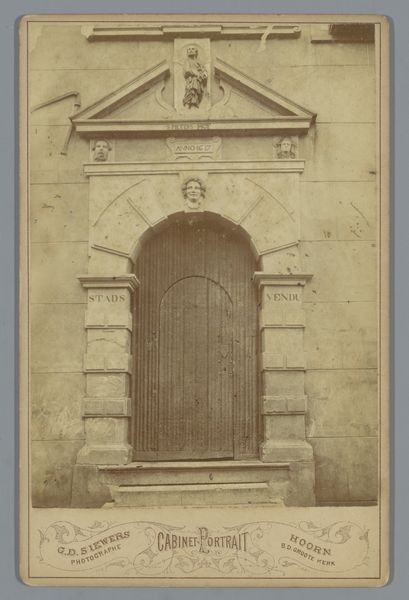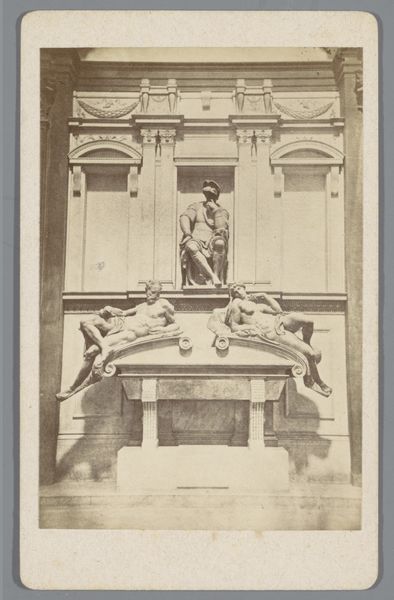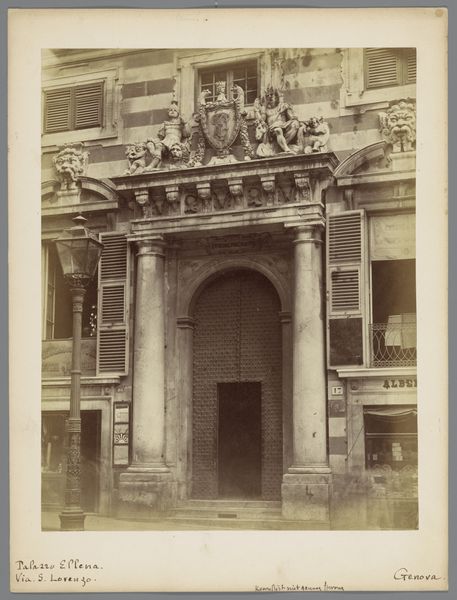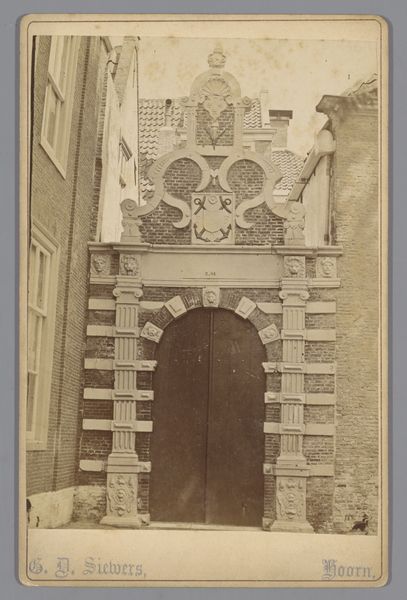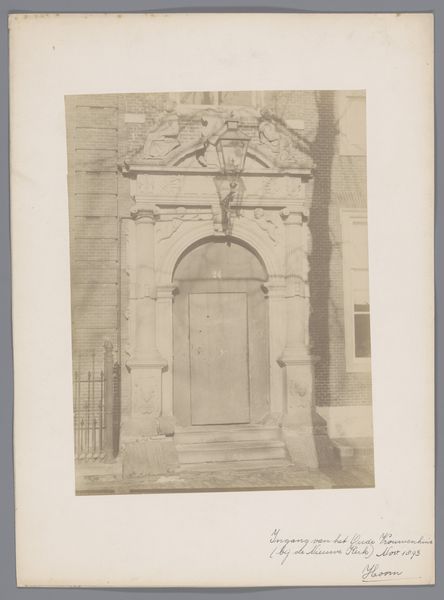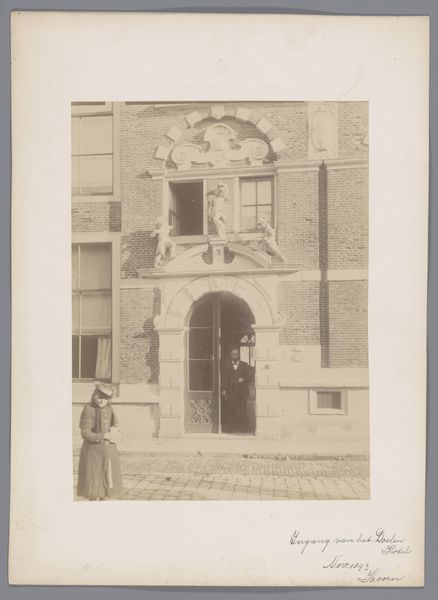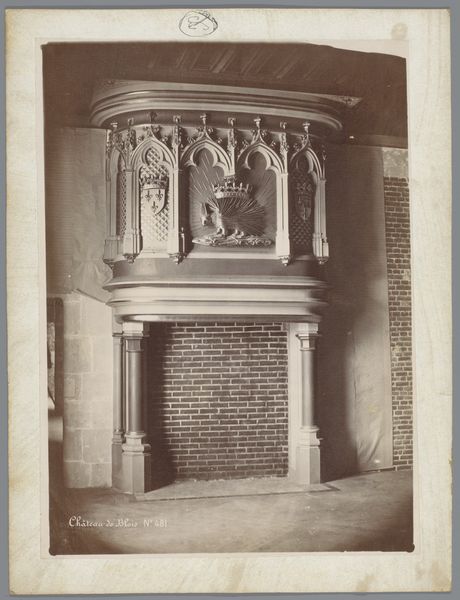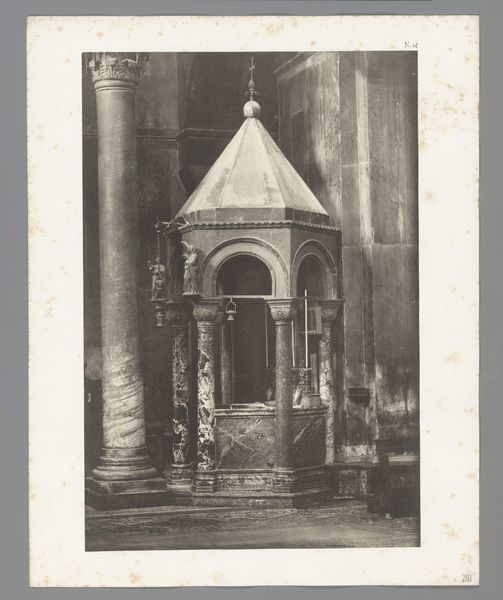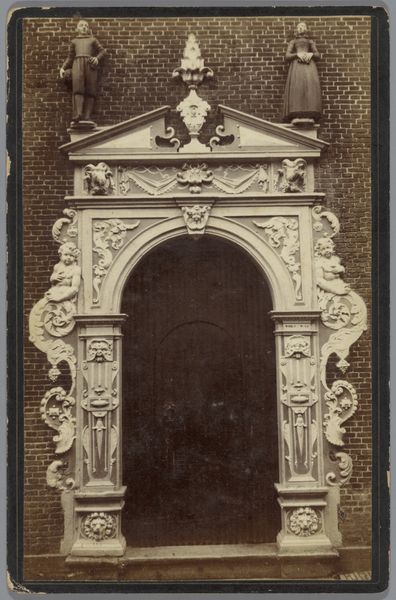
Dimensions: height 245 mm, width 177 mm
Copyright: Rijks Museum: Open Domain
Editor: We’re looking at Gustave Eugène Chauffourier’s “Fontein van Ponte Sisto te Rome,” a photograph probably taken between 1875 and 1900. It’s such a striking image, especially in its monochrome rendering – it almost feels like a memory. What captivates you most about it? Curator: It’s the silence, isn't it? The paradoxical silence captured in an image of cascading water. Think of all those Romantic painters, sketching away at scenes like this, chasing the sublime... Chauffourier freezes a moment, doesn't he? And the fountain itself, imagine its stories. All that stone witnessing centuries of Roman life. Doesn’t it feel like time has gathered there, somehow? Editor: Definitely. It’s aged but solid. Almost timeless. Do you see a lot of influence from the romantic period here? Curator: The landscape photography definitely plays into that romanticism. It goes hand in hand with a sense of reverence. What do you make of that strong contrast? Editor: I find it fascinating, the interplay between the hard, architectural lines and the almost ethereal quality of the water. Like opposing forces held in perfect balance. Curator: Beautifully said! Opposites are the heart of art. Light and shadow, solid and liquid, memory and document... Chauffourier isn’t just documenting Rome; he’s inviting us to dream in sepia tones. Isn’t that a fantastic act of generosity? Editor: Absolutely! It’s made me see this piece as more than just a picture, and more of a visual poem. Curator: I know, I think photography itself is all the better for having him. It certainly puts a twist on what it means to capture something on film.
Comments
No comments
Be the first to comment and join the conversation on the ultimate creative platform.
